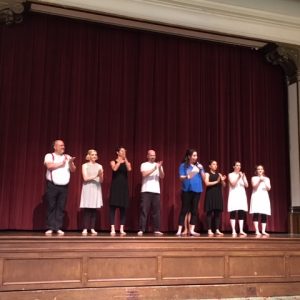
Dementia is not only challenging for the person experiencing it, but it is also stressful and unsettling for loved ones. However, as modern technology evolves, there are more options when it comes to caring for elders at home.
Technology cannot replace in-person care, however, it can be a tool to help caregivers feel more secure. Here are the top 5 technological innovations to consider if you have a loved one living at home with dementia.
1. GPS Location and Tracking Devices
Sadly, seniors with dementia have been known to wander and get lost, placing themselves in danger. GPS tracking devices are an important technology for caregivers to consider. The tracking device will send an alert when the elder has left a certain area and is capable of locating the person and notifying emergency personnel if necessary.
2. In-Home Cameras
In-home cameras allow elders to be monitored at all times. Some allow you to talk to your loved one, and others will alert you when there is movement in the room. In addition to checking in on your loved one, you will also be able to make sure that there are no intruders and that he or she has locked the doors, turned off the oven, and any other minor task that could put him or her in danger. Consider installing these cameras in multiple rooms of your loved one’s home and be sure to get the entire room in the range of view.
3. Communication Aids
As modern technology evolves, the way that humans communicate has also evolved. For some family members that do not live close to their loved ones, technology will help them stay connected. Family members should ask their loved one’s caregiver to assist with connecting via Facetime, Skype, or Zoom for a video-chat visit.
4. Motion Sensor Lights
Motion sensor lights have the ability to save lives as elders, and especially those with dementia, are subject to falls at night. Seniors often trip and fall in the dark and the injuries that they suffer from these falls can be life-threatening and altering. However, this doesn’t have to be the case. Motion lights are a technological solution to this issue.
Motion lights will detect movement in a room and can make getting around easier. Instead of risking a fall walking to a light switch, the lights will turn on as soon as the elder stands up. This technological innovation will help to support a safer environment for older adults.
5. VitalTech
This cloud-based platform is an outstanding innovation worth considering. Launched in 2018, this technology comes in the form of a band worn by the elder. In addition to medication reminders, the VitalBand can also track:
- Vital signs; heart and respiratory rate, oxygen saturation, etc.
- Falls
- Sleep quality
- Physical activity
In case of injury, or when vital signs are questionable, the band will contact emergency services, allowing for 24/7 safety. Without delay, information can be tracked and reported to medical providers.
Technology Advantage
It may be helpful to implement technology options to assist with caring for a loved one living with dementia and offer you more peace of mind.
About the Author
AGE-u-cate welcomes Kelsey Simpson as a guest contributor.
Kelsey Simpson enjoys writing about things that can help others. She currently works and writes for Comfort Keepers, in-home senior care. She lives in South Jersey and is the proud companion to two German Shepherds and spends her free time volunteering in dog shelters.


 Dementia Friendly Fort Worth recently sponsored Remember This, a participatory performance experience by the
Dementia Friendly Fort Worth recently sponsored Remember This, a participatory performance experience by the